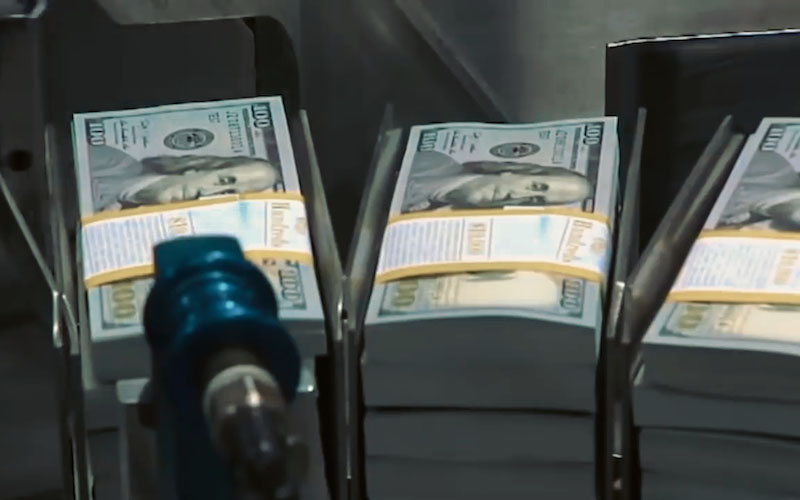A Christmas Eve gamble: Inside the secret rooms of the 27 EU nations, a vote of the century on global trade change takes place.
2025-10-28 21:42:02
The Southern Common Market (Mercado Comúndel Sur, Mercosur for short) is the most influential regional economic integration organization in South America. It was established on March 26, 1991 and is headquartered in Montevideo, Uruguay.
Its core goal is to promote the free flow of goods, services, capital and people among member countries by eliminating trade barriers and coordinating economic policies, thereby promoting regional economic development and social integration.

Mercosur accounts for 70% of South America's population and 65% of its GDP, making it the fifth largest economy in the world (in terms of purchasing power parity).
As a resource-exporting (bloc) regional cooperation organization, it plays a key role in the global food and energy markets, and at the same time shapes the paradigm of South-South cooperation through multilateral trade agreements.
Despite facing the dual pressures of internal integration and external competition, Mercosur remains a core force in maintaining economic sovereignty and promoting multipolarization in Latin America.
Trade is a long-term endeavor, but its success may affect the international trade order in the next decade
The free trade agreement negotiations between the EU and Mercosur were a 25-year trade marathon: initial contacts between the two sides began in the 1990s, and negotiations officially launched in 1999. Initially, they focused on tariff reductions for industrial products and market access for agricultural products, but were suspended in 2004 due to disagreements over non-tariff barriers and environmental standards. They were only restarted in 2010 due to the economic recovery needs of both sides.
Substantial progress was made after the exchange of market access proposals in 2016, with a framework agreement reached in 2019. However, the agreement was stalled due to the Bolsonaro government's environmental inadequacy and the EU's demand for additional forest protection clauses. Lula's return to the Brazilian presidency in 2023 fueled negotiations, and in December 2024, the two sides added a new chapter on "sustainable development" and established an agricultural product safeguard mechanism (which allows for tariffs in the event of a surge in imports or a drop in prices) to resolve differences.
The EU approved the text of the agreement in September 2025 and plans to sign it on December 20, but it still faces opposition from France, Poland and other countries within the EU (which are worried that South American agricultural products will impact local agriculture), as well as risks from Brazil's environmental protection enforcement (illegal logging in the Amazon) and Argentina's economic turmoil on the Mercosur side. The EU's deeper motivation for promoting the agreement also includes balancing China, responding to US tariff threats, and ensuring the security of resources such as lithium mines.
Current progress towards signing the 2025 agreement
European Commission President Ursula von der Leyen will fly to Brazil on December 20 to sign the long-awaited deal, as long as EU governments give the go-ahead.
BRUSSELS — The European Union is aiming to finalize a major trade deal with Latin America’s Mercosur before Christmas, with European Commission President Ursula von der Leyen planning to fly to Brazil on December 20 for the official signing ceremony.
But first she needs an absolute majority of the EU's 27 member states to seal the long-awaited deal, which would create a free trade zone covering 800 million people.
Two EU officials and an EU diplomat revealed that European Council President António Costa proposed the signing date at a meeting of European leaders last Thursday. Olof Gill, deputy chief spokesman of the European Commission, said: "As President von der Leyen has previously stated, we reiterate our commitment to signing the agreement before the end of this year, subject to the completion of the relevant procedures in the European Council.
The EU's core motivation for pushing for the agreement
The EU is pushing for the agreement to be implemented as its trade relations with China and the United States continue to change, putting the bloc under urgent pressure to find new trading partners.
The Southern Common Market (Mercus of Argentina, Brazil, Paraguay and Uruguay) will exempt 91% of EU imports from tariffs and relax restrictions on passenger car imports; at the same time, the alliance's member states will benefit from better access for their exports (from beef to ethanol).
Specific mechanisms and necessity for accelerating agreement approval
Three EU diplomats revealed that in order to speed up the approval process, the trade and political sections of the agreement are expected to be voted through a "qualified majority vote" procedure.
This means that the agreement needs to be supported by 15 of the 27 EU member states, and the population of these countries must account for 65% of the total EU population.
The initial expectation was that the partnership agreement would require unanimous support from member states - generally speaking, agreements involving areas of sovereignty of member states such as investment and political cooperation require approval by unanimous vote.
Two other diplomats, who, like other sources cited in this article, spoke on the condition of anonymity to discuss the sensitive process, said there was no date set for final approval of the agreement by ambassadors.
Disagreements among the signatories of the agreement
Brussels proposed a compromise plan to allay concerns among France, Poland, Italy and other countries that the agreement would harm the interests of their agricultural practitioners.
Under the plan, the EU's executive arm pledged to monitor imports of sensitive goods such as beef, poultry and eggs; if a surge in imports or a plunge in prices disrupts local agricultural product markets, tariffs will be imposed on the relevant goods.
This additional safeguard instrument requires the support of both the Council of the EU and the European Parliament.
Bernd Lange, chairman of the European Parliament's trade committee, told EU ministers earlier this month that lawmakers would approve the safeguard mechanism through a simplified procedure, without a plenary vote. All officials and diplomats stressed that the current timetable remains fluid and could be adjusted later.
The short-term and medium- to long-term impact of the agreement on the euro and the US dollar
In the short term, the expectation of the signing of the agreement may drive the appreciation of the euro, but opposition from France and Poland and pressure from agricultural product imports may limit the rise;
In the medium and long term, if the agreement is implemented smoothly, the expansion of EU industrial product exports to Mercosur and the diversification of resource imports will enhance the economic resilience of the eurozone, but agricultural shocks and environmental disputes remain potential risk points.
Comprehensively judging, the euro-dollar exchange rate may fluctuate by 1-2% before and after the signing of the agreement in December. At the same time, since the euro accounts for 57.6% of the US dollar index, this agreement will also affect the US dollar index around December.
The ultimate direction will depend on the coordination of interests within the EU and Mercosur's ability to fulfill its obligations. Investors should closely monitor the results of the EU Council vote in December 2025 and the implementation of subsequent agricultural subsidy policies.
At 21:25 Beijing time, the euro is trading at 1.1630/31 against the US dollar.
- Risk Warning and Disclaimer
- The market involves risk, and trading may not be suitable for all investors. This article is for reference only and does not constitute personal investment advice, nor does it take into account certain users’ specific investment objectives, financial situation, or other needs. Any investment decisions made based on this information are at your own risk.





















